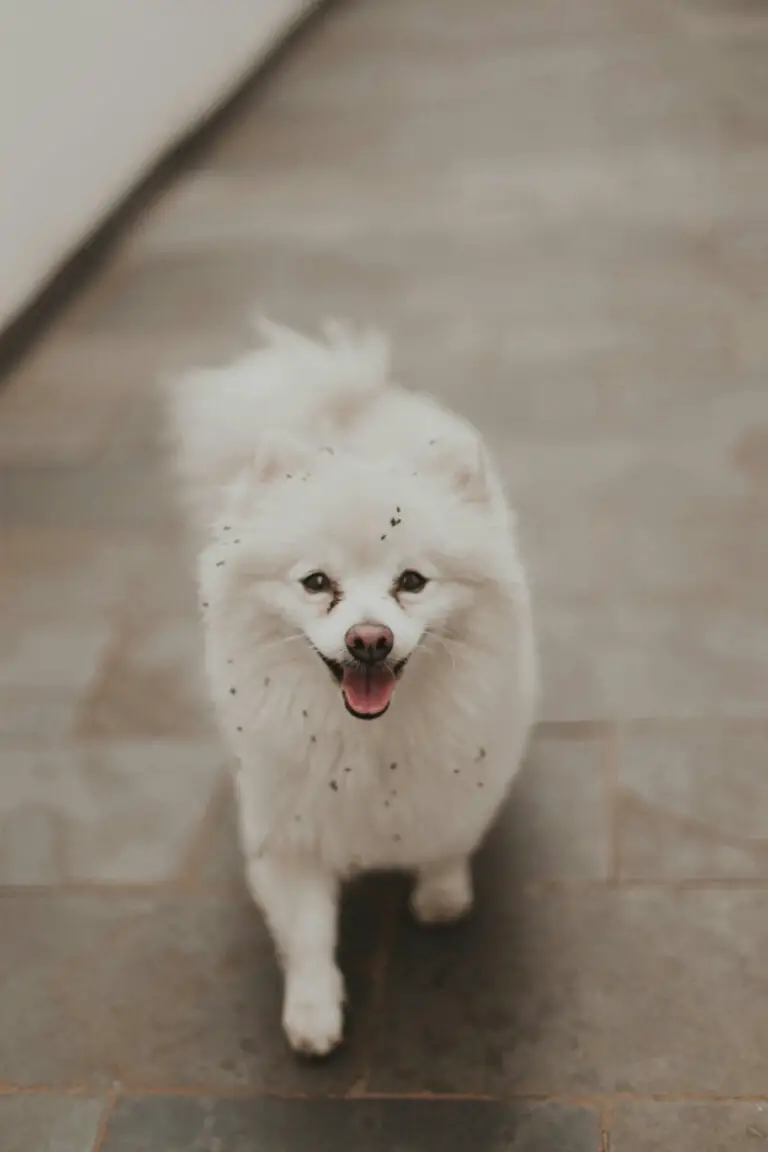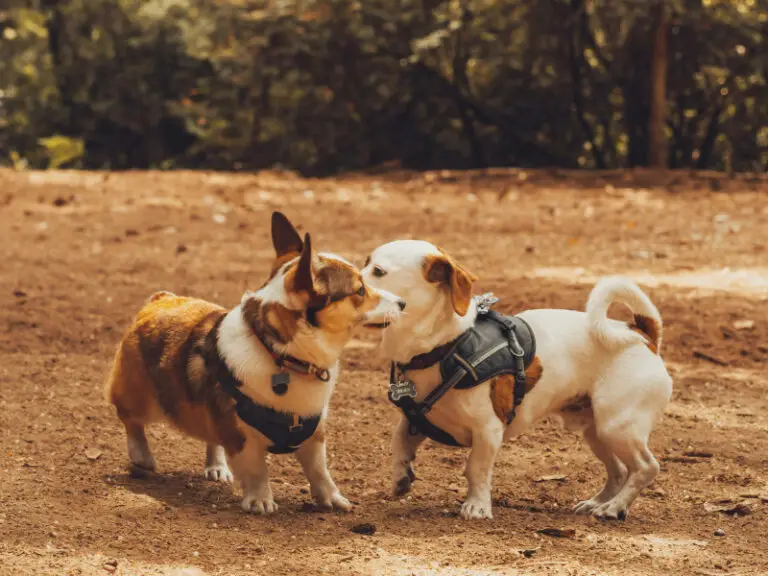The American bulldog is one of those breeds that have been diversifying over time. Breeding for specific purposes has led to the development of different lines, which can sometimes be difficult to identify. Would you know how to distinguish a Scott from a Johnson?
Keep reading below to find out what the main types of American bulldog are, how they were obtained, and how they differ…
Table of Contents
The 5 types of American bulldog
When talking about American bulldog bloodlines, the first ones that come to mind are the classic or Johnson type and the Scott type. However, after numerous generations of breeding, these original types have been diluted, resulting in 5 different types of American Bulldog.
They are:
- Classic American bulldog
- Standard American bulldog
- American bulldog painter
- Old white southern bulldog
- Hybrid American bulldog
Let’s see what characterizes them and how you can differentiate them …
1. Classic American Bulldog / Johnson / Bully
All original Johnson bulldogs come from the breeding line of John D. Johnson, their creator. This dates back to the times of World War II. For many, the Johnson bulldog is the authentic and ideal specimen within the breed.
It is a robust, heavy, and muscular dog. Compared to the Scott bulldog, the classic has a larger, wider body. Some specimens can reach 70 cm in height at the withers and weigh more than 50 kg. The square skull and typical underbite give it that distinctive bulldog look.
Note. He has a prominent scissor bite, failing to show his lower teeth while his mouth is closed.
It is also distinguished by its pendulous lips, short jaw, facial wrinkles, and significantly short, flat snout.
As a pet, the bully is friendly and very protective of his family. He is often described as having a friendly, laid-back, comical, even goofy attitude. His low energy levels make him an unathletic and lazy fellow, putting him at risk for obesity.
In the 1970s, a hobbyist named John D. Johnson bred two of his American bulldog females (King’s Lady Grace and Johnson’s Sugar Doll) with an English bulldog. This is how the rise of the Johnson bulldog began, a type of bulldog less athletic and more aggressive in appearance.
Variations of the classic American bulldog
- American Bulldog 100% Johnson. It is bred exclusively from the original Johnson breed. It is generally taller and slimmer than other variations of the same type, such as the bully and the extreme bully.
- American Bulldog “Bully”. Bully specimens are still of the classic type, but they have a shorter snout and are also not as tall or as long as the 100% Johnson specimens. Most of them still retain the drive and athleticism of a working dog. Typically, a bully will have slightly thicker bones.
- American Bulldog “Extreme Bully”. This dog is smaller than the Bully and the classic Johnson. It usually has a shorter snout, with an upturned nose and small nostrils. His body and bones are notably thick, hence he tends to be less athletic. This variation has traits very similar to the English bulldog.
2. Standard American Bulldog / Scott
The American bulldog Scott, or standard type, has a different story to tell. This dog is the result of a cross between the American bulldog Johnson and southern bulldogs, such as the white English bulldog. The name is also due to its creator, Alan Scott.
The standard line is much faster and more agile than the classic bulldog line. Its body structure is solid, athletic, and its legs are longer and thinner. Generally, it measures between 55 and 68 cm in height at the withers and is usually less heavy (27 to 45 kg).
It could be described as a large, stocky white pit bull with long legs. In fact, they are almost always confused with the American Pit Bull Terrier.
Instead of the classic underbite, the Scott line has what is known as a reverse scissor bite (the lower teeth rub against the outside of the upper teeth). His snout is also longer.
This type of American bulldog was bred to work, which is why it requires a much more stimulating environment. It is recommended for people with an active lifestyle, as if you are not regularly physically and mentally stimulated, you can develop destructive behaviors.
Due to his natural power and stamina, he is known by many as the ” performance American bulldog ” or ” Performance “. It has skills to protect, hunt, and pull weight, among other physical jobs.
Did you know…? During World War I and World War II, the American bulldog came close to the brink of extinction. The only surviving dogs were located on farms in the southeastern United States. John D. Johnson and Alan Scott were recognized as the two pioneers in rescuing the breed since with their enthusiasm and dedication they managed to get it off the ground.
3. American Bulldog Painter / Margentina
The Painter or Margentina, named after its breeders, is a bulldog whose history is closely linked to the world of fighting. He was developed and bred solely for this purpose. The speed and agility of his body, coupled with the powerful bite, made him the perfect candidate.
Like the Scott, it is considered a performance bulldog.
It is a smaller dog than its brothers, weighing approximately 25 to 35 kg; however, it is still stocky and bulky. He is often described as a highly responsive and trainable type of American bulldog.
4. Old White Southern Bulldog / White English Bulldog
The white southern bulldog is said to be the oldest of the breed. It is believed that his lineage laid the foundation for the development of the other bulldogs that exist today. None of these specimens descend from modern breeding lines.
Although not as popular, they are still common in the American South. Some breeders even still use purebred English bulldogs in their breeding process to introduce fresh genetic material into some lines.
It should be noted that while the names Old White Southern Bulldog and White English Bulldog are often used interchangeably, they are not actually the same dog. Both are very similar variations, whose structure shows subtle differences, practically imperceptible to the untrained eye.
Note. Currently, many breeders defend the idea that this dog is not an American bulldog, and therefore should not be registered as such. They also advise against their participation in the breeding of the current American dog.
5. Hybrid American Bulldog
Although not referring to a specific or individual dog, many American Bulldogs are considered to be of the hybrid type. These dogs are the result of the cross between the bully and the standard, with the aim of obtaining a new specimen with the best features of both types.
It is said that the majority of current American bulldogs fall into this category.
Breeders typically use several lines to cross, giving rise to a wide variety of traits, the body builds, temperaments, and abilities. It is common to want to adapt the breed for a specific purpose, for example as a companion animal, working dog, or guard dog.
Physique-wise, they are generally stockier than the standard American bulldog and have a longer muzzle and slimmer head build than a classic American bulldog. But the truth is that hybrid bulldogs are not distinguished by a certain aspect.
There are no general rules in terms of size or structure. These dogs may have different characteristics from either line. Ie, it may be the case of an American bulldog Bully hybrid style, or an American bulldog hybrid style more elegant and slim as the standard.
It may interest you: Bulldog Temperament…? English, American, French



